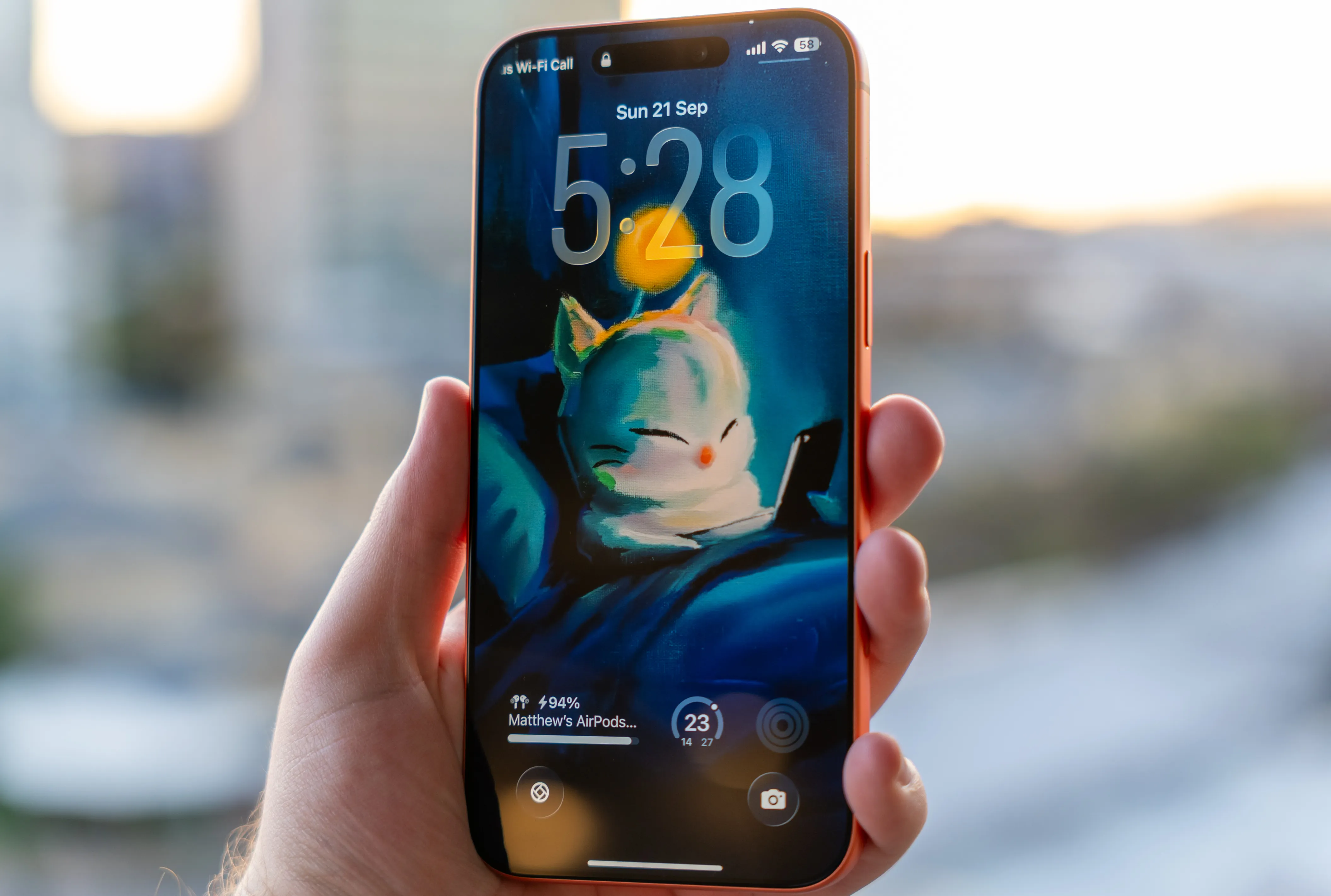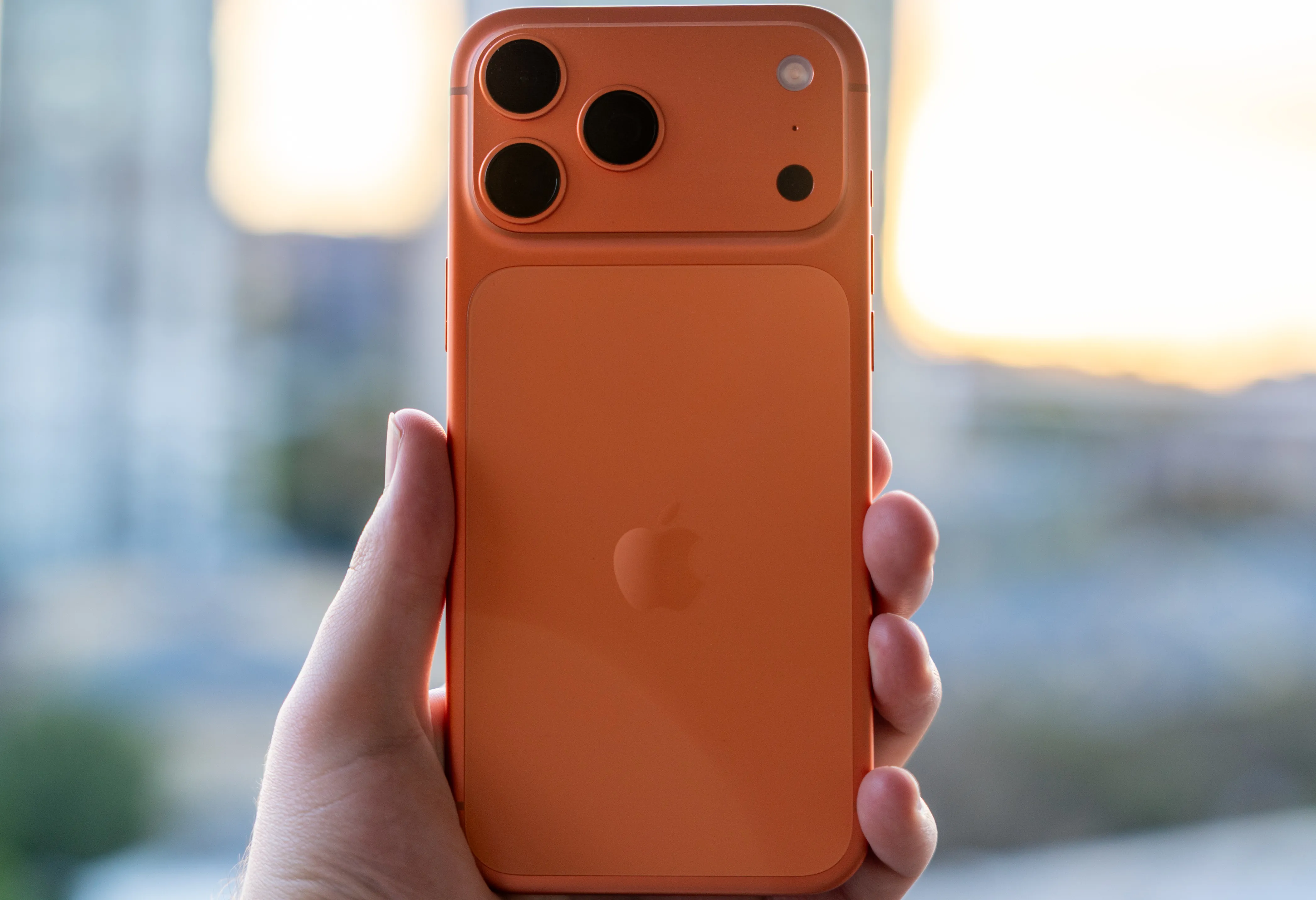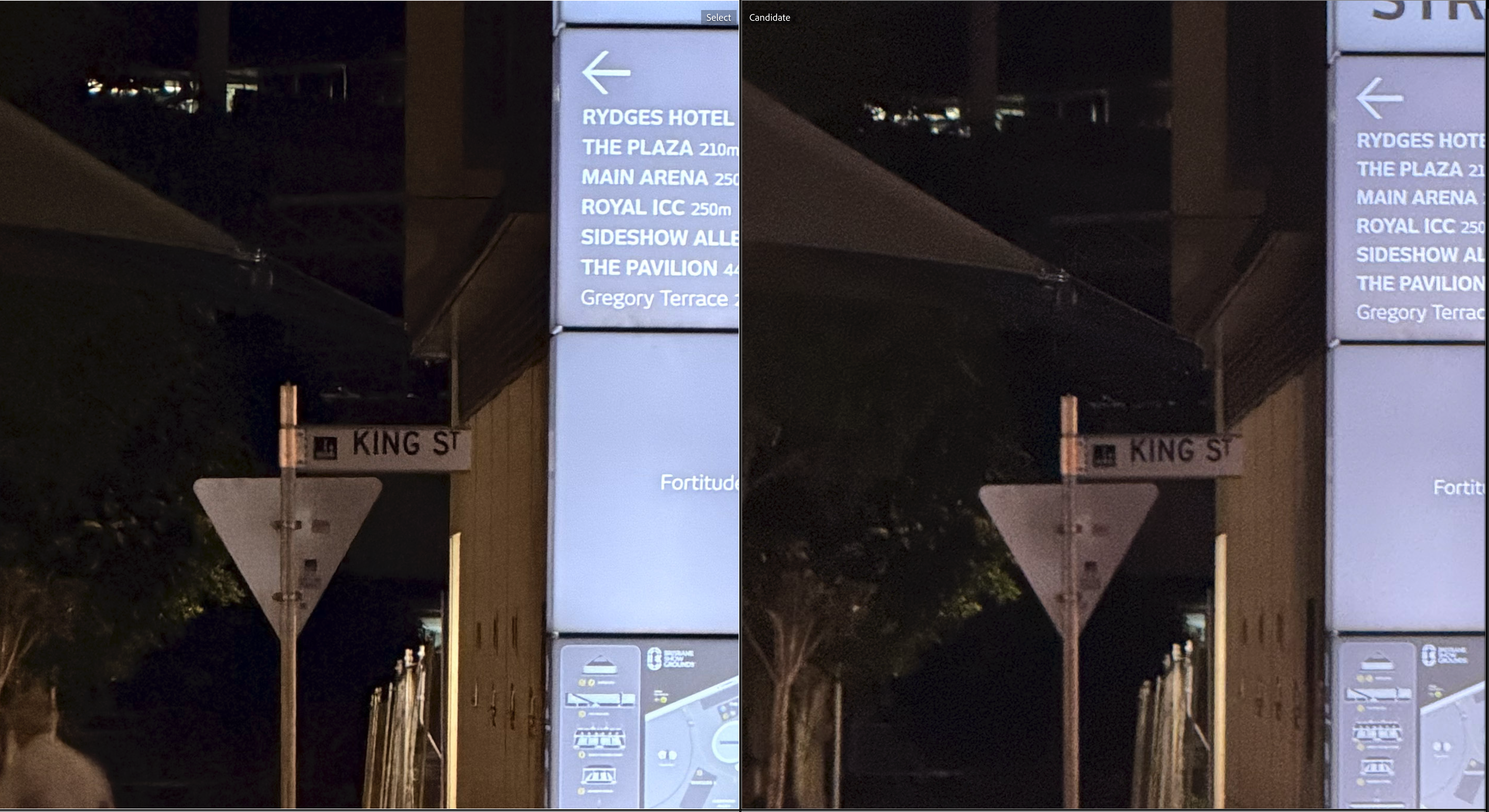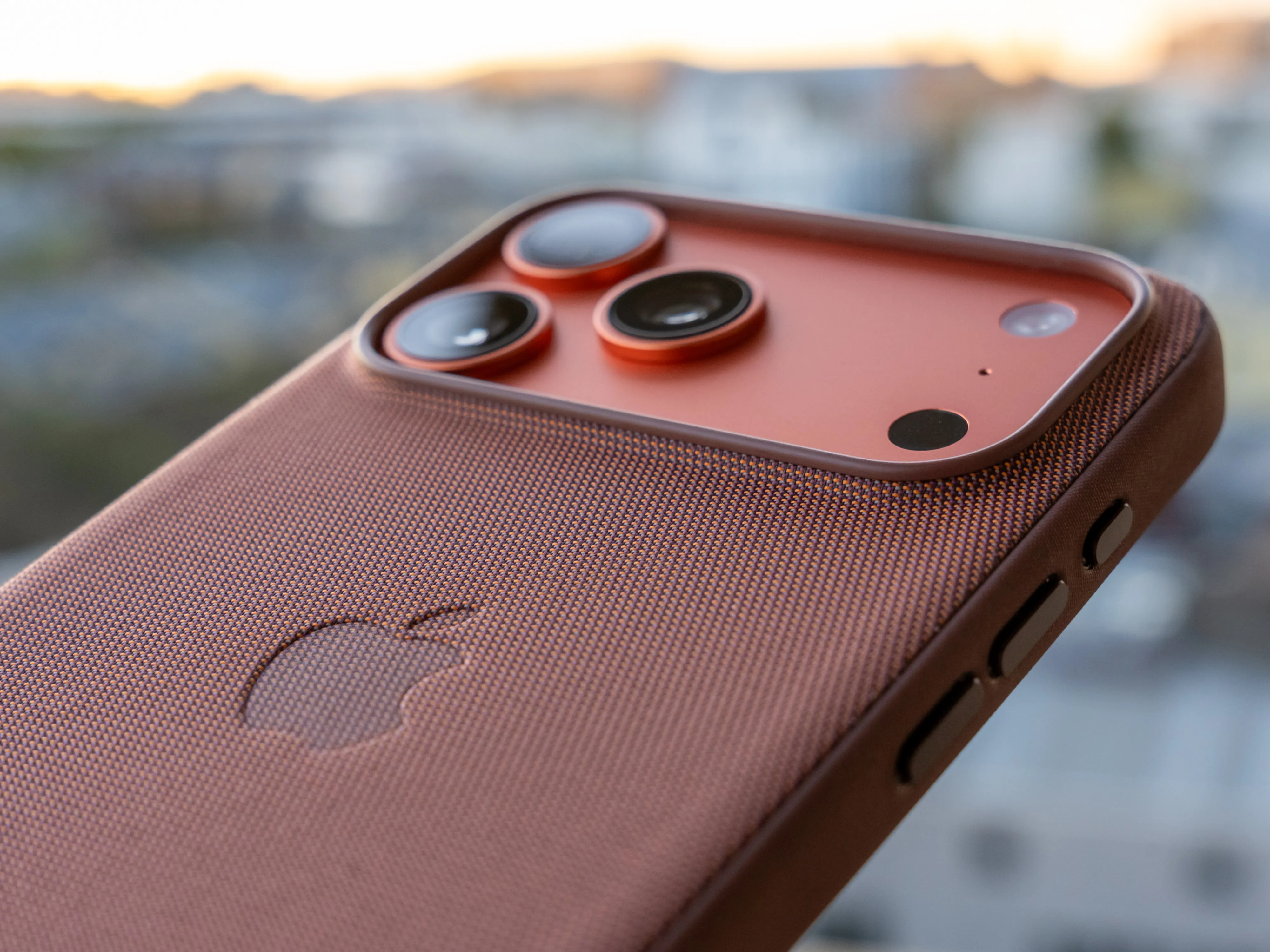26 September 2025
iPhone 17 Pro Max Review
There are many iPhone reviews out there, but this one is mine.

I'm upgrading from a 15 Pro Max, despite having told myself every year that I'd stop upgrading so quickly. This year, the combination of a larger battery and a significantly improved telephoto camera was enough to sway me. Let's get into it.
Design
“Iconic Plateau” is how Apple describes the giant bar that holds the cameras on the iPhone 17 Pro, and it’s a love-it-or-hate-it deal. I really love it, the previous camera “mesa” made the top of the phone look unbalanced, and this resolves that nicely.
What doesn’t help are the colour choices this time around. No black or space grey on a “Pro” model is blasphemy. I have previously spent a lot of time going back and forth before preorder day trying to pick a colour, but in past years there was always the safe fallback of black. The word on the street is this is due to the new aluminium finish scratching up too easily, personally, I’d have taken that risk. Instead, faced with the choices available, I took the risk presented to me and embraced the Cosmic Orange. I like it so far, but it's undoubtedly a very loud phone.

As striking as the new design and colourway is, it surprised me how quickly during setup, it still felt like my outgoing iPhone. Turns out you really just don’t look at the back of your phone all that much. It’s a little heavier in the hand, but without both phones in hand to compare, I don’t notice the weight difference. The Pro Max has always been a chunky boi, and this year it’s just a tiny bit more chunk.
With the Air now firmly serving as the "pretty" phone, I hope Apple continues to lean into the more utilitarian, maximalist design we see with this year’s Pro. The plateau, for my money, could grow considerably thicker, as could the camera modules within it. No money in the world can beat physics, and fitting some new, larger sensors behind those cameras would be a proper "Pro" move.
As for the various buttons, they’re the same as on the 16 Pro. The action button, in this era of AI, is particularly useful for triggering a more capable assistant than Siri. Camera control is best left as a button to launch your preferred camera app and nothing more, so much so that it's now the default setting.
Display
The display is excellent, as it has been on every Pro iPhone since the 13 when ProMotion 120Hz was added. There’s a little more brightness here in peak sunlight, which is nice, but not game-changing compared to recent models. The new anti-glare coating is a mild improvement, but if I didn’t know it was there, I’d likely not have noticed.
Cameras
As the rumour mill leading up to the iPhone 17 launch went on, there was much discussion of a new telephoto camera, often accompanied by suggestions of variable aperture or variable zoom lengths. Such a feature seemed unlikely but was rumoured so heavily it felt like it had to be shipping.
About a week before launch, as pundits waxed lyrical with their predictions, it became clear, at least to me, what Apple was going to do: There would be no variable zoom lens; the mechanical complexity doesn’t make sense, and we always see any physical tech in the Android world first anyway. Not even those wacky Chinese brands are doing that yet and features so complex just don't debut at iPhone scale.
No, Apple was going to do what they have done with the main camera for some time now: call a digital crop another lens.
The Primary Camera
The main shooter on the iPhone 17 Pro remains, for all intents and purposes, unchanged from the iPhone 15 Pro. That’s not a bad thing - it’s a very capable camera, and in the iPhone form factor, there’s not a lot more to ask for.
It also, however, doesn’t make things very interesting. If you’re into phones enough to read reviews for fun, you probably already have this or an equivalent main camera on your phone today.
The Ultra Wide
The Ultra Wide camera on the 17 Pro is the same as the base 17 and the 16 Pro before it, which was a modest upgrade from the 15 Pro before that. With the 2024 upgrade in the 16, the Ultra Wide finally crossed from more of a toy to something truly decent. Things can still fall apart quickly in dim lighting, the tiny 1/2.55" sensor simply cannot collect enough light in lower light scenarios. For landscapes or outdoor architecture (or with a tripod for longer exposures) it’s a great camera. And when you just can’t fit everyone in the frame in a cozy restaurant, at least you’ll get the shot.
The Telephoto
This is the biggest improvement year-on-year in the iPhone camera system. A 55% larger sensor, coupled to a slightly shorter lens—down to 100mm equivalent from 120mm—with a bump in resolution from 12MP to 48MP (kind of). As with the main and Ultra Wide, this is now a quad bayer sensor, so you aren’t going to get close to a true 48MP of detail, and most of the time you’ll want the 12MP mode for the best results. That bigger sensor still only gets things to 1/2.55", the same as the Ultra Wide, but I find the use cases for a telephoto usually have the subject better lit, such as concerts or sports events.
You get about two-thirds to a stop of extra light compared to the previous telephoto, resulting lower ISO and greatly reduced noise/noise reduction artefacts in processed modes. This extra light and resolution means that even if you zoom in to 5x on this 4x optical lens, you still get a noticeably cleaner image than from the 5x optical lens of the previous generation.

This example from the 17 Pro Max (left) at 4x cropped in to a similar frame to the 15 Pro Max (right) at 5x shows the difference well. There's more detail, the noise is finer, and the processing artefacts from the noise reduction built into the iPhone's camera software are reduced.
It's not a mind blowing difference, but especially if you like to view your photos on larger displays, you'll appreciate the extra quality.
Then there’s the 8x/200mm crop mode, which Apple calls "optical quality." That’s simply not true, but it is very impressive. There’s some special processing for these crop modes that Apple has developed, which works surprisingly well. So well that this 8x mode is likely to pull me into Camera.app for stills when the occasion suits, even though I mostly shoot in Indigo or Halide these days.
The Selfie
The selfie camera got what I’d heard before launch was the biggest upgrade. I’m not sure I agree. It’s definitely cool that you don’t need to rotate your phone to get a horizontal group selfie now, but as a result of the much wider lens, I find I like regular selfies less. Image quality wise it’s a similar story: improvements for group selfies when you’re as wide as you can be, but the digital crop for a single person results in very similar image quality to previous models unless you’re unflatteringly close to the very wide lens.
I can’t help but wonder if a more traditional setup, just focused on getting a larger sensor with the previous field of view, would have been better. Turning the phone sideways truly wasn’t that hard.
Battery Life
The largest battery in an iPhone ever seems to deliver the best battery life in an iPhone ever. It will take some more weeks of living with the phone to really know, but initial impressions are very positive, reminiscent of the 13 Pro Max for me. That means getting from ~7am to 11pm with about 40% charge left, with 4-5 hours of screen on time. My 2 year old iPhone 15 Pro Max was under 20%, often lower, with the same use. For most this is truly a multi-day battery, and for me I hope means that even on heavy travel days battery anxiety is a distant concern.
Of note: here in Australia, we are still getting the SIM model of the Pro phone, so there’s another ~5% of battery to be had in the eSIM-only models. Hopefully this is the last model year for this split, as all carriers here do support eSIM and the Air is eSIM only worldwide already.
Performance
Phones from, well, basically every manufacturer have felt plenty fast for a long time now. Is what I would have said, prior to Adobe’s Project Indigo releasing earlier this year. Indigo isn’t yet available for the iPhone 17 series at the time of writing, so check back later.
The vapour chamber cooling system has seemingly helped keep heat better under control than previous models, but were you really pushing your iPhone hard enough that it mattered?
Software
This is the exact same iOS 26 you’re getting on every supported iPhone, with the same Apple Intelligence features as the 15 Pro onwards, if that’s something you care about. It’s just as in need of polish, and just as glassy, here as anywhere else.
Accessories
Apple launched TechWoven cases this year for the iPhone 17 series, after the failure of FineWoven in years past. It's too early to say if this will hold up, but I've been hoping for a nice fabric case since the Pixel 2 fabric case days. I picked up the Sienna colour and I love it so far, it's also one of the few options that won't clash with Cosmic Orange.

Conclusion
Conclusions for reviews really come down to one thing: should you buy this product? If you’re an iPhone Pro Max customer, you probably already know if you want a new one or not. I’m certainly happy coming from a 15 Pro Max, especially with the battery upgrade and the new telephoto camera.
If you’re not a Max buyer, however, this year in particular, I think it’s a much harder choice. The base iPhone 17 finally got ProMotion and always-on display this year, it comes in nicer colours, and it’s a lot cheaper. You’re really only giving up the telephoto lens and a little quality on the main shooter. Only you know if those are valuable for your usage.
Then there’s the Air, which is as much fashion as it is technology. That’s a whole other discussion.
Or maybe, you just like orange.